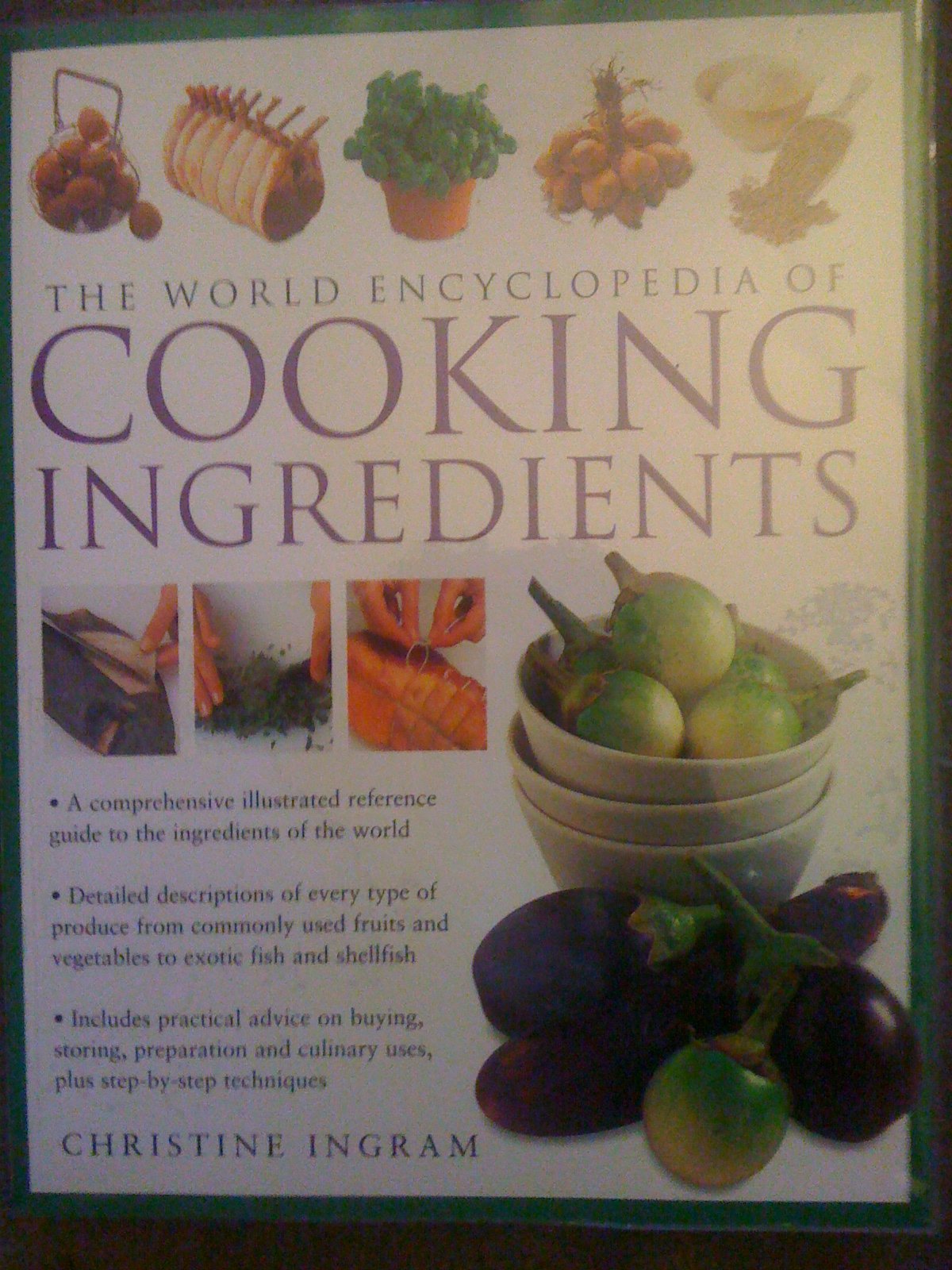

The World Encyclopedia of Cooking Ingredients
B**Y
a resource every foodie should get
Excellent book and a great resource.... gave it to several friends all of whom love it...and of course coming thru Amazon you know you will be happy or they will make it right....
J**R
Cooking Encyclopedia
This book has great illustrations on an wide assortment of ingredients. With great pictures it goes into detail about the hows of cooking, storing and the taste and texture of the items discussed. It also discusses the differences in varieties and purchasing. It is broken down into 12 different sections 1)Eggs and dairy, 2)Cheese, 3)Fish and shell fish, 4)meat/poultry and game, 5) Vegetables, 6)Beans, lentils, peas and grains, 7)Pasta, noodles and wrappers, 8)fruits, nuts and seeds, 9)herbs and spices, 10)condiments, flavorings and oils, 11)tea, coffee, chocolate and sweeteners, 12) equipment. I highly recommend this book for the food enthusiast or for people that just want learn and have a better understanding about the food that is around us. I had purchased this book before and lost my copy I was glad to see I found it on amazon. I only wish this book had the health benefits for the body included in its descriptions. I hope this review helps.
A**3
Your Guide To Good Taste
If you like food, get this book. Once you learn what various ingredients can do for food, you will know why I rated this book five stars.
R**G
A consise cooking resource
An excellent source of information for anyone who not only cooks, but who eats. Several secrets of cooking are revealed almost on every page. For example I learned the difference and value of baking powder and baking soda, why a pinch of salt is necessary in baking, and what vegetables offer to complement this or that meal. This book should be on a nearby shelf in every kitchen and every cook or what ever grade should have it as a resource.
C**V
Nice reference book
Lots of info
I**R
Great!
Very interesting and packed with information. Large book however.
B**N
A word on Definitive Guides, Bibles and World Encyclopedias
When I purchased this book, I was somewhat of a foodie and I'd have eaten just about anything. Since then, I've become much more interested in nutrition and find that I gravitate to plant-based ingredients for my meals. So, I'm interested in exploring a wider range of vegetation, than the book covers.PROS:-Beautifully displayed foods with a fair amount of variety in each section (cheeses, eggs, meats, grains, etc..)- This book's audience is definitely UK/USA, which means that if you live in either 2 countries, most, if not all of the ingredients are accessible in one way or another.-The layout will arouse interest and encourage exploration.-Section on utensils used to prepare and cook many of the items mentioned is quite useful-Several color photosCONS:More of a coffee table-type book. As another reviewer said, some of the pictures are huge, which would be fine, if the emphasis was on highlighting texture or some other property, but it isn't. Or perhaps if the some photos weren't a fraction of the page, there'd be room for other items listed. And many of the illustrated ingredients are the most common or only showed in a processed form.Categorization: I'm no botanist, but peppers, tomatoes, olives, bananas, avocado and eggplant are the only items under the vegetable fruit category. And since the definition of what constitutes a fruit is very basic, I expected a book entitled The WORLD ENCYCLOPEDIA of Cooking Ingredients, to be somewhat more inclusive and technical.For instance, there's no mention of the ongoing confusion in sorting out even the most common members of the allium family. Ex: There's a subtitle, "Spring Onions/Scallions." There IS, in fact, a difference between the two (Scallions don't form the round bulb) Or in Louisiana, green onions are often called shallots... Or in the nut section it just says Walnuts. No mention that English walnuts are actually Persia walnuts and that black walnuts have much more intense flavor. Persimmons are illustrated in the fruit section and again in the index. Yet Sharon fruit is the only type/variation/modification mentioned.At any rate, the book does have value and will likely introduce most readers to something new. I guess I was looking for less common fruits, veggies, herbs, etc. It's really a shame that Africa, southern Americas, Asia and to a lesser extent Oceania often fall under the radar in such 'comprehensive' WORLD and definitive-type references as they contribute greatly to the diversity of the US/UK palate.
Trustpilot
2 months ago
1 day ago